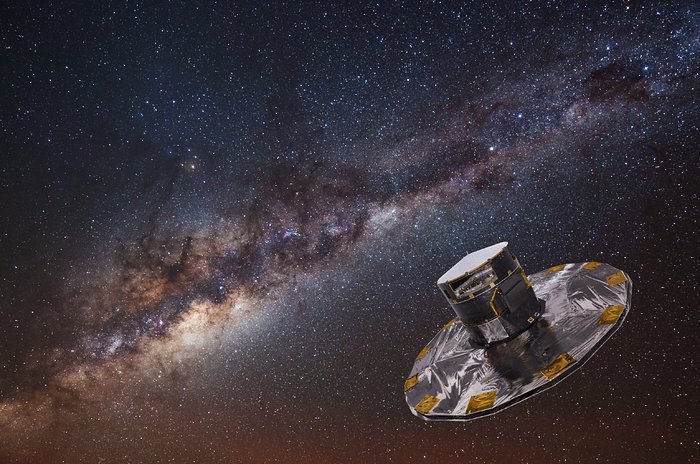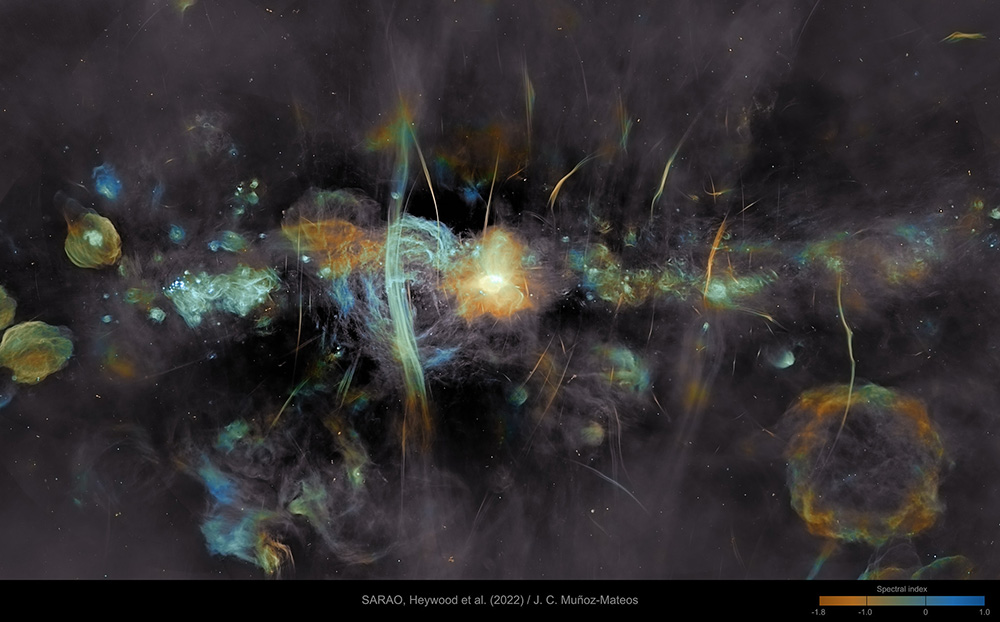Black holes are some of the most fascinating objects in the universe, known for their immense gravity and mysterious nature. While they are famously known for their ability to swallow everything in their vicinity, including light, black holes can also emit powerful beams of energy called jets. Jets are narrow beams of plasma that shoot out from the proximity of black holes at relativistic speeds, meaning they are close to the speed of light. This week, Nature published a new observation of the supermassive black hole at the center of the M87 galaxy that captured the first image of the jet and the black hole shadow together. See the science…
Read More >>From Life to Death
Ever wonder about the lifetime of a star or how black holes form as stellar remnants? When clouds of gas and dust cool and collapse under gravitational forces, they form protostars. Protostars can be seen as the infancy stage of stars because they are still gathering mass from the parent molecular cloud. The masses of these protostars drastically affect the evolution of the star over the course of time. The more massive the star is, the more violent its death is. The less massive, the more likely the star is to become a dwarf (see Figure above). Dwarfs are generally systems with low energetic processes. The three subclasses of dwarfs…
Read More >>The forgotten middle child of black holes
Often in these blog posts we talk about two things. At one end of the spectrum, there are supermassive black holes that exist in the centre of galaxies (106 – 1010 M⊙). And at the other, stellar mass black holes (∼ 10 M⊙), which are the endpoints of the evolution of the most massive stars and can be found orbiting another star, forming a black hole X-ray binary (BHXB). But what about the poor forgotten black holes with masses between these two classes? After all, it makes sense to think that, at some point in cosmic time, black holes between 10 and 106 M⊙ had to exist, in order to…
Read More >>When Making the Nearest Black Hole, Three May Not Be a Crowd !
As a scientist who works in a black hole research group, I am often stopped on the street and asked “What is the nearest black hole to Earth?” to which I might mumble “Hmmm, oh, hmmm, I’m guessing its perhaps Cygnus X-1 ?”. ( In fact, its not. Cygnus X-1 is simply the first black hole discovered and the one of the brightest sources in X-rays which is why it was noticed in the first place ). Surely it is the intrinsic properties of astrophysical objects that make them scientifically interesting, such as mass, luminosity or the kind of companions they are associated with rather than things which depend on…
Read More >>A Wormhole or a Black Hole?
Last year, the Event Horizon Telescope (EHT) presented the observations of Sagittarius A* (Sgr A*), located at the Galactic Center of the Milky Way. Their results confirm the presence of a supermassive black hole at the center of our galaxy (see Fig. 1 or this interview). Such an astrophysical object is expected to be described by the Kerr spacetime, which is a solution of Einstein’s equation for a rotating black hole. Furthermore, they also investigated potential deviations from the Kerr prediction, such as the traversable Morris–Thorne wormhole! See my previous blogpost for more context about wormholes. The visual difference between simulations of the accretion flow from the two spacetime geometries is shown in…
Read More >>Self Similarity: the Nature of the Universe?
One thing that has always confused me since I was a bachelor: What is a power law? According to Wikipedia: “In statistics, a power law is a functional relationship between two quantities (y, x), where a relative change in one quantity results in a proportional relative change in the other quantity, independent of the initial size of those quantities: one quantity varies as a power of another.” That is, y = c x –k, where c is a constant and k is the power-law index. Well apparently, it seems that a power law is just a mathematical definition! However, you might feel surprised when I tell you that more than a hundred power-law relationships have been identified in multiple…
Read More >>Our black hole, Sagittarius A*
Tune in today (21 June 2022) at 8pm CET as host, Melanie During interviews our PhD student, Wanga Mulaudzi. In this interview, Wanga will tell us about our black hole, Sagittarius A*, and how the Event Horizon Telescope collaboration went about imaging it for the very first time in history! Watch the livestream here https://youtu.be/jWsC8HJ5d4k.
Read More >>What is in the Center of our Galaxy?
Last week we received the announcement that on May 12, through press conferences around the world, the Event Horizon Telescope (EHT) will reveal groundbreaking results about the center of our galaxy: the Milky Way. More than a hundred years had to pass since the publication of Albert Einstein’s General Relativity, for us human beings to be able to decipher that mysterious center of our existence, from the point of view not only of the solar system but from a universal vision. But why are we interested in that? And how is it possible to observe something so far away? For many centuries we have wondered about the origin and evolution…
Read More >>Beyond the Milky Way Band
For translations of this post in Xhosa, Xitsonga, Afrikaans and Arabic, see here! If you have ever been lucky enough to be in a remote area, far away from the buzz of city life, then you might have looked up at the sky as the wonders of the Milky Way were revealed to you. Seeing the Milky Way with your own eyes is a truly magical experience. But what is the Milky Way and why does it look like a starry band of milk. Well, the Milky Way is the galaxy we live in. From our point of view, which is from Earth, when we look towards the centre of…
Read More >>¿Qué hay en el Centro de Nuestra Galaxia?
La semana pasada recibimos el anuncio de que el próximo 12 de mayo, mediante conferencias de prensa en todo el mundo, el Telescopio de Horizonte de Eventos (EHT) va a revelar revolucionarios resultados sobre el centro de nuestra galaxia: La Vía Láctea. Tuvieron que pasar más de cien años desde la publicación de la Relatividad General de Albert Einstein, para que nosotros los seres humanos seamos capaces de descifrar ese misterioso centro de nuestra existencia, desde el punto de vista no solo del sistema solar, sino desde una visión más universal. Pero ¿por qué estamos interesados en eso? y ¿cómo es posible observar algo tan lejano? Durante muchos siglos nos…
Read More >>


